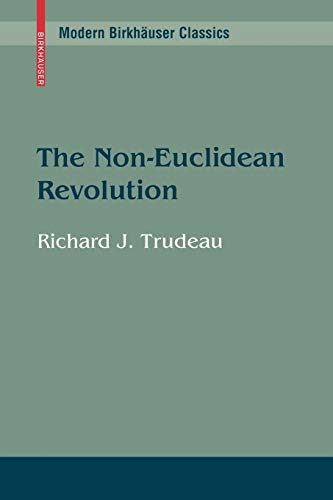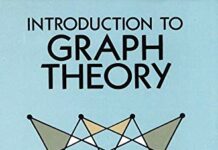
Ebook Info
- Published: 2001
- Number of pages: 286 pages
- Format: PDF
- File Size: 9.72 MB
- Authors: Richard J. Trudeau
Description
Richard Trudeau confronts the fundamental question of truth and its representation through mathematical models in The Non-Euclidean Revolution. First, the author analyzes geometry in its historical and philosophical setting; second, he examines a revolution every bit as significant as the Copernican revolution in astronomy and the Darwinian revolution in biology; third, on the most speculative level, he questions the possibility of absolute knowledge of the world. A portion of the book won the Pólya Prize, a distinguished award from the Mathematical Association of America.
User’s Reviews
Editorial Reviews: Review From the reviews:”Trudeau meets the challenge of reaching a broad audience in clever ways…(The book) is a good addition to our literature on non-Euclidean geometry and it is recommended for the undergraduate library.”–Choice, February 1988″…the author, in this remarkable book, describes in an incomparable way the fascinating path taken by the geometry of the plane in its historical evolution from antiquity up to the discovery of non-Euclidean geometry. This ‘non-Euclidean revolution’, in all its aspects, is described very strikingly here…Many illustrations and some amusing sketches complement the very vividly written text.”–Mathematical Reviews”In The Non-Euclidean Revolution, we have a mathematically rigorous explanation of … sea change in mathematics which is at the same time suitable for any educated reader. … I have found that this book achieves my goal of bringing some serious mathematics into our honors program and Trudeau’s goal of bringing his readers through the 19th century revolution brought about by an alternative to Euclid’s geometry. … Trudeau’s book shines as a guide to that revolution.” (Mark Bollman, MathDL, May, 2008) From the Back Cover How unique and definitive is Euclidean geometry in describing the “real” space in which we live?Richard Trudeau confronts the fundamental question of truth and its representation through mathematical models in The Non-Euclidean Revolution. First, the author analyzes geometry in its historical and philosophical setting; second, he examines a revolution every bit as significant as the Copernican revolution in astronomy and the Darwinian revolution in biology; third, on the most speculative level, he questions the possibility of absolute knowledge of the world.Trudeau writes in a lively, entertaining, and highly accessible style. His book provides one of the most stimulating and personal presentations of a struggle with the nature of truth in mathematics and the physical world. A portion of the book won the Pólya Prize, a distinguished award from the Mathematical Association of America.”Trudeau meets the challenge of reaching a broad audience in clever ways…(The book) is a good addition to our literature on non-Euclidean geometry and it is recommended for the undergraduate library.”–Choice (review of 1st edition)”…the author, in this remarkable book, describes in an incomparable way the fascinating path taken by the geometry of the plane in its historical evolution from antiquity up to the discovery of non-Euclidean geometry. This ‘non-Euclidean revolution’, in all its aspects, is described very strikingly here…Many illustrations and some amusing sketches complement the very vividly written text.”–Mathematical Reviews
Reviews from Amazon users which were colected at the time this book was published on the website:
⭐Book was otherwise in good shapeDid I mention the stupidity of pasting a barcode on top of title on front cover?…so when peeled off it damages the cover by taking with it some of the title’s lettering…unbelievably stupid
⭐Excellent exposition of geometry, Euclidean and hyperbolic. Does a wonderful job of placing hyperbolic geometry in a historical and philosophical context.
⭐This is on the whole a standard semi-historical text on non-Euclidan geometry. What sets this text apart from the others in this genre is Trudeau’s candidness regarding conclusions and interpretation of this story. Trudeau’s conclusions and interpretations are precisely those of the blue-eyed research mathematician of today, not realising that he is distorting history for the purpose of propaganda. His propaganda goal is simple: intuition is bad, formalism is good. The history of non-Euclidean geometry does not support this conclusion, so Trudeau has to fake it. He does this in the form of fictitious dialogues with a student, whose stupid “intuitions” are always set straight. For example, this alleged student has the alleged “intuition” that Playfair’s axiom is necessarily true. His feeble struggle with Trudeau’s iron intellect even needs to be condensed by this statement:”Time goes by. More proofs are suggested. Trudeau, with obvious pleasure, demonstrates how each proposal turns on some assertion logically equivalent to Postulate 5. Finally the other lapses into exasperated silence.” (p. 161).The conclusion sanctioned by Trudeau is that intuition should be given up in favour of formalism. But this is complete bogus-history. The whole point of the debate concerning Postulate 5 was precisely that it was *not* intuitively obvious. Which is why Trudeau is reduced to fighting, “with obvious pleasure,” a fictitious opponent. While the result was not intuitive, the nature of the formal system suggested that it could be proved. Thus *it was the formal system that fooled us,* not our intuitions about geometry. Therefore, if any lessons are to be learned from the history of non-Euclidean geometry it is the exact opposite of that sanctioned by Trudeau.Among the many other things which Trudeau gets backwards because of his doctrinal blindness are the relation of logic to mathematics (p. 14) and why Kant was wrong (p. 250). But I do not have the patience to detail these things.
⭐As indicated in my other reviews, my views of the subject differ from accepted ones, and I will try to explain them further in relation to this book.The book assumes a somewhat condescending attitude, with imaginary dialogues between the author and presumably a student, possibly from the author’s experience. The student asks supposedly “common sense” questions, and the author answers with lengthy explanations, sounding to me like excuses that make the teacher come out the loser.Thus in a section about “points” (pp.23-30) the author defends the current concept of lines as composed of points, although a point is taken to have zero dimension, and zeros plus zeros are understood to add up to zero. The concept of points as the constituents of lines is indeed recent and questionable. The author like others overlooks Euclid’s definition 3, “The extremities of a line are points”, and points are in fact used to delimit lines, as do “breadthless” lines delimit areas, either usage not adding to dimension.Another dialogue discusses “line” (p.170), which has caused similar confusion. Today the word is used for “straight line”, while contrariwise the term is also applied to curves like great circles on a sphere. But the sticking point to me is the way it is justified to leave “primitive terms” undefined and then “interpret” them as desired (e.g. p.169).The justification is roughly as follows. Basic logical principles are so general that one needn’t specify what they are about, and then can apply them to particular cases. This is indeed true if a principle holds for anything whatsoever. But, for instance, Euclid’s 5th postulate applies specifically to straight lines in a plane, which is why to reinterpret those terms as curvatures, and say the postulate then does not apply and is hence unprovable, commits the fallacy of equivocation.What is disappointing is that undoubtedly good heads so carelessly perpetuate illogicalities while laying claim to increased rigor.
Keywords
Free Download The Non-Euclidean Revolution (Modern Birkhäuser Classics) in PDF format
The Non-Euclidean Revolution (Modern Birkhäuser Classics) PDF Free Download
Download The Non-Euclidean Revolution (Modern Birkhäuser Classics) 2001 PDF Free
The Non-Euclidean Revolution (Modern Birkhäuser Classics) 2001 PDF Free Download
Download The Non-Euclidean Revolution (Modern Birkhäuser Classics) PDF
Free Download Ebook The Non-Euclidean Revolution (Modern Birkhäuser Classics)
